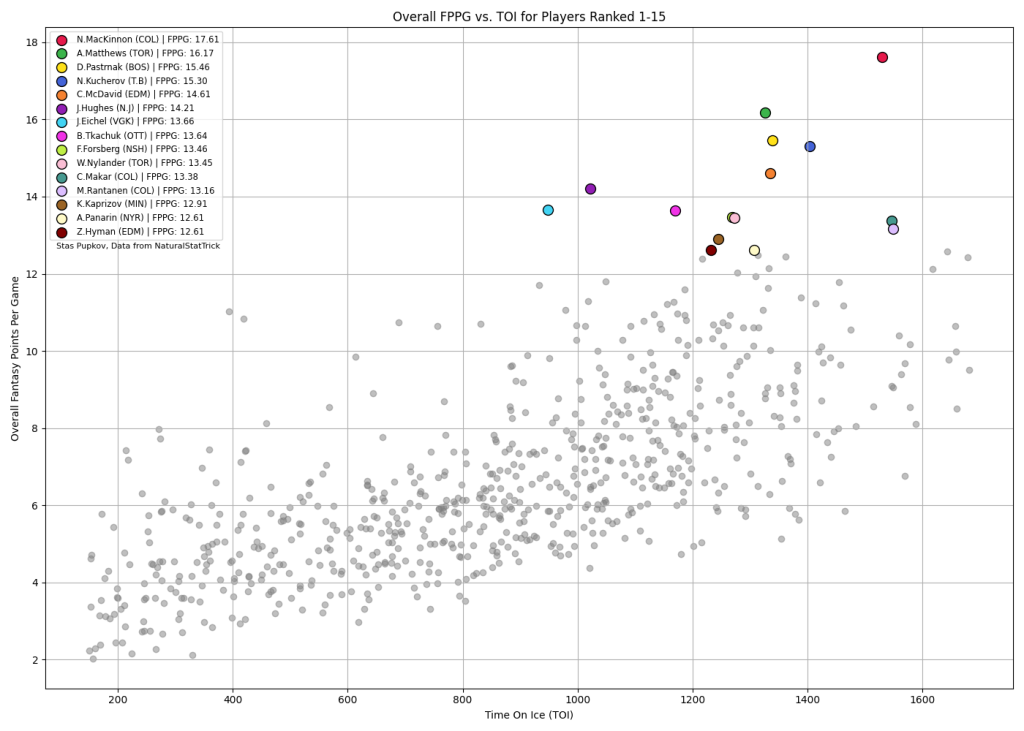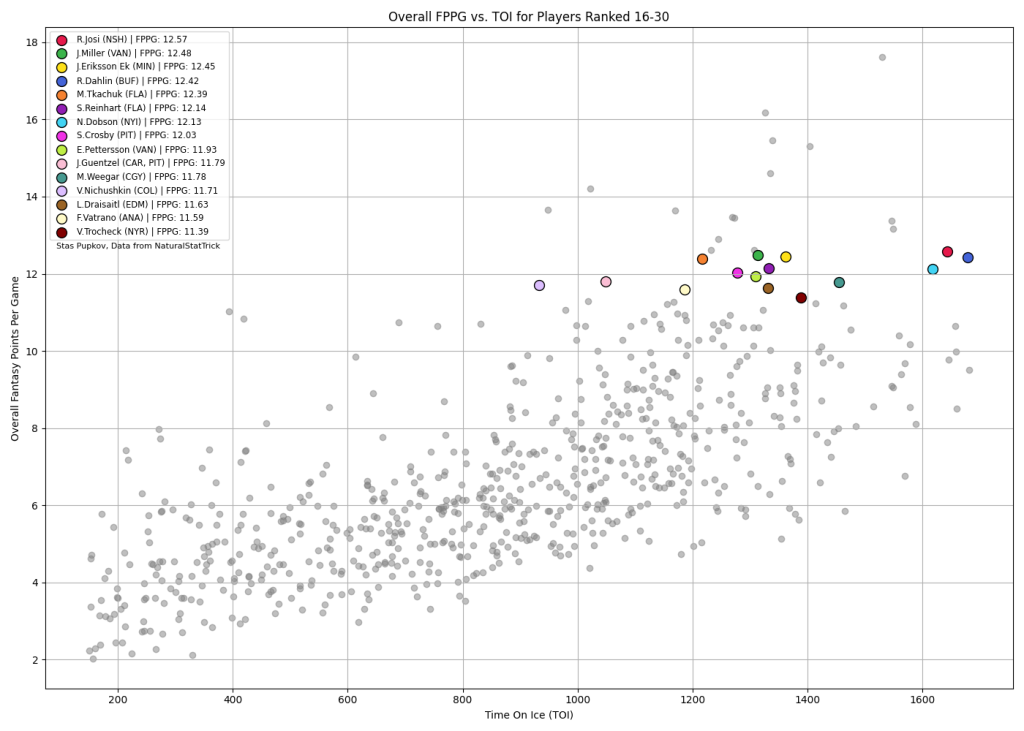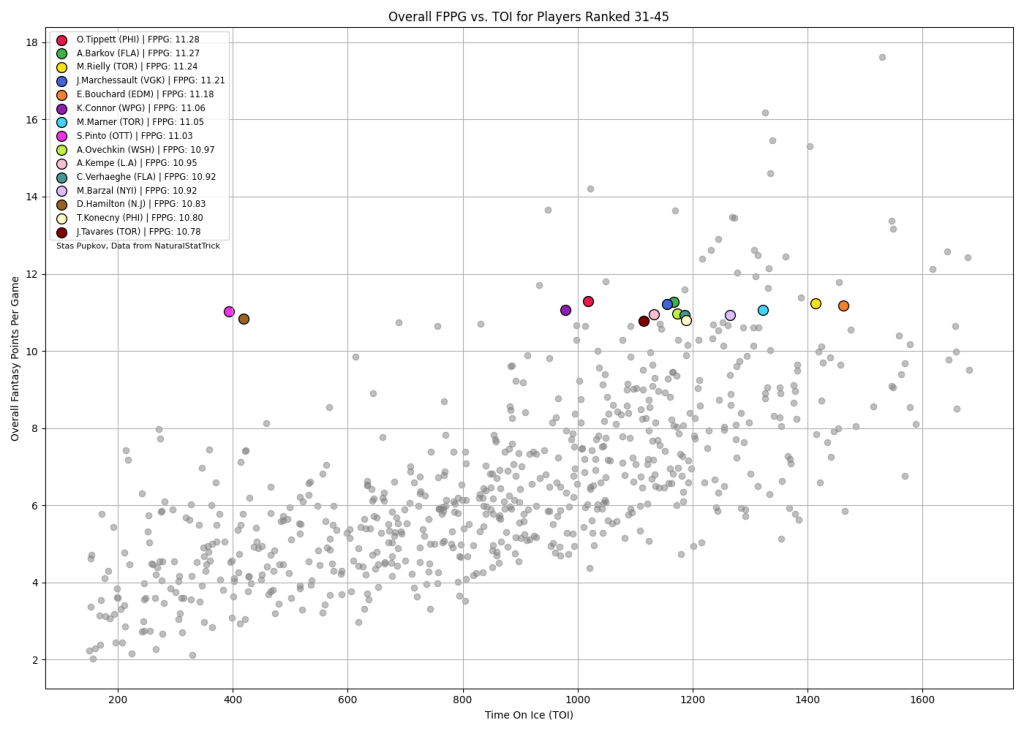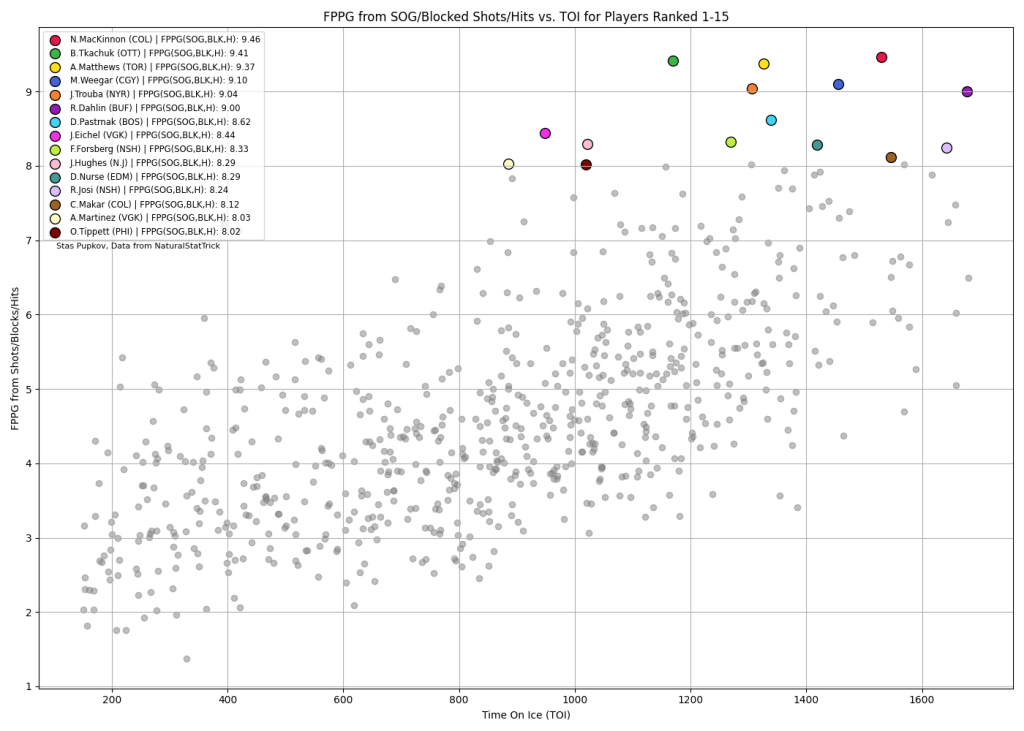As the NHL season unfolds, fantasy hockey managers are on a perpetual quest for strategies that can give them the edge in their leagues. While the allure of goals, assists, and goaltending victories often dominates drafting strategies, the savviest of managers know the value of digging deeper. Our previous analysis ventured into the less trodden paths of player performance metrics, shedding light on how shots on goal, blocked shots, and physical engagement could be pivotal in clinching fantasy league success.
Building on that foundation, this follow-up analysis delves into updated data and refined visualization techniques to further illuminate the unsung heroes of fantasy hockey. With an enhanced focus on Fantasy Points Per Game (FPPG) derived from overall contributions and specifically from Shots, Blocked Shots, and Hits (FPPG – SBHv), we aim to provide managers with an arsenal of insights that transcends conventional fantasy wisdom.
The updated analysis presented in this series aligns with this evolving analytical landscape. By focusing on FPPG from both overall contributions and specifically from categories like Shots, Blocked Shots, and Hits, we underscore the multifaceted nature of value in fantasy hockey. This nuanced approach allows managers to uncover hidden gems—players whose contributions may not always headline the sports news but are nonetheless instrumental to fantasy success.
As we delve deeper into this updated analysis, remember that the goal is not just to identify which players are performing well but to understand why and how their contributions can be harnessed within the context of a fantasy hockey strategy. This understanding is key to navigating the complexities of modern fantasy leagues and securing a competitive edge.
Unpacking the Updated Analysis
In refining our approach to fantasy hockey analytics, we’ve honed in on two critical metrics: overall Fantasy Points Per Game (FPPG) and FPPG specifically generated from Shots, Blocked Shots, and Hits. This decision stems from recognizing that while scoring goals and assists are crucial, a player’s involvement in the game’s less glamorous aspects can also significantly impact fantasy standings.
Utilizing Orad's Handsome Fantasy Hockey League's scoring metrics: Our analysis is anchored in a scoring system that values not just the flash of goals and assists but the grind of shots, blocks, and hits. This multifaceted scoring reflects the diverse ways a player can contribute to fantasy success. Orad's scoring system is being used again:
Goals: 6 points
Assists: 4 points
Shots on Goal and Blocked Shots: 1.6 points each
Hits: 0.6 points
This scoring system ensures that players who contribute across all areas of the game are duly recognized, providing a more holistic measure of fantasy value.
Why This Focus? By dissecting FPPG through these lenses, we aim to spotlight players who excel beyond traditional stats. This dual approach allows us to appreciate high scorers while also identifying those who's consistent on-ice engagements provide a steady stream of fantasy points.
Through these refined metrics, we offer fantasy managers a deeper insight into player value, equipping them with the knowledge to make more informed decisions that could be the difference between winning and losing.
Deep Dive into the Graphs
Our suite of six meticulously crafted graphs are at the heart of this analysis. Each serves as a visual story about the different facets of fantasy hockey performance:
Graphs 1-3: Overall FPPG vs. TOI
Top 15 Players by Overall FPPG:

Illustrates the heavy hitters of the league—those whose scoring ability is unmatched.
Useful for identifying reliable stars who are likely to continue their high-level performance.
Players Ranked 16-30:

Highlights those who may not be at the very top but still contribute significantly.
Perfect for spotting players who could be undervalued and poised to rise.
Players Ranked 31-45:

This sheds light on potential sleepers—players whose consistent performance could make them valuable pickups.
It also offers insight into depth players who can provide stability during the long fantasy season.
Graphs 4-6: FPPG from SOG/BLK/HITS vs. TOI
Top 15 Players by FPPG from SOG/BLK/HITS:

Focuses on players who excel in the gritty aspects of the game.
Ideal for identifying players who may not score every night but still add fantasy value through their physical play.
Players Ranked 16-30:

Reveals mid-tier players who are often the backbone of their real-world teams.
Assists managers in finding players who can contribute to multiple fantasy categories.
Players Ranked 31-45:

Uncovers the unsung heroes whose contributions are critical yet frequently overlooked.
Encourages managers to consider these players as stabilizers for their fantasy rosters.
Each graph is not only a reflection of past performance but also a predictive compass. They suggest which players are likely to sustain their contributions and who may emerge as invaluable assets as the season progresses. Fantasy managers can wield this visual data to adjust their strategies, seek out trade opportunities, or snatch up free agents ahead of the curve.
Conclusion
In the competitive arena of fantasy hockey, success hinges on more than just star players; it's the unsung contributors that often hold the key to a winning season. Our analysis reveals that consistent performance in the trenches—shots, blocks, and hits—can be just as valuable as scoring goals. As we head towards the end season, keep these insights in mind to make strategic decisions that go beyond the surface stats.
Thank you for reading and have a great rest of your day!
Twitter/X – @DH_staspup for any questions, corrections, or comments
If you want to see how your team looks on the graph, DM me a list/photo of your roster.
Player Data sourced from NaturalStatTrick





 FLA
FLA CHI
CHI NYR
NYR PIT
PIT L.A
L.A COL
COL CAR
CAR UTA
UTA SEA
SEA
 NYI
NYI TOR
TOR VAN
VAN
